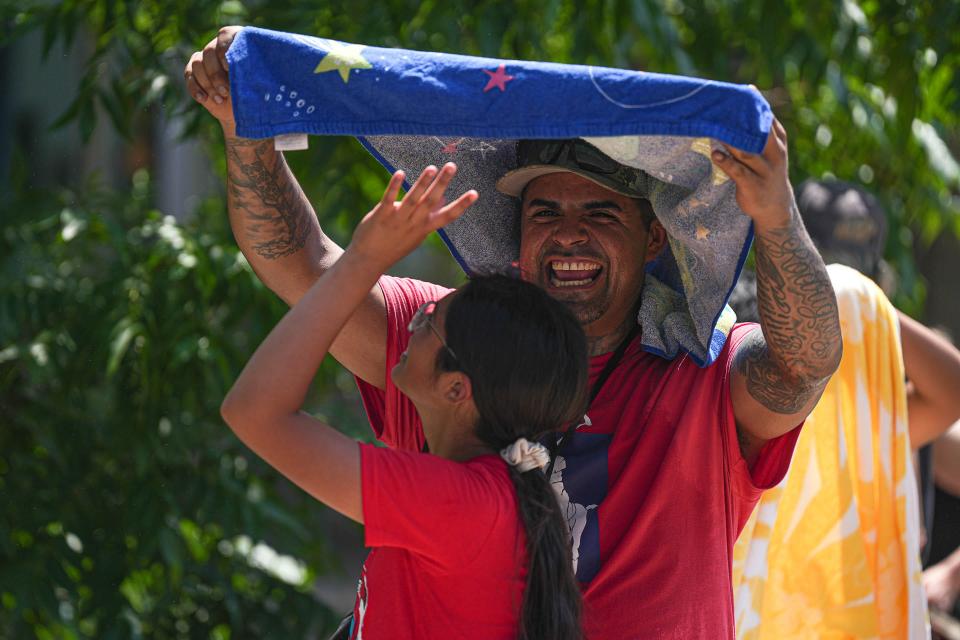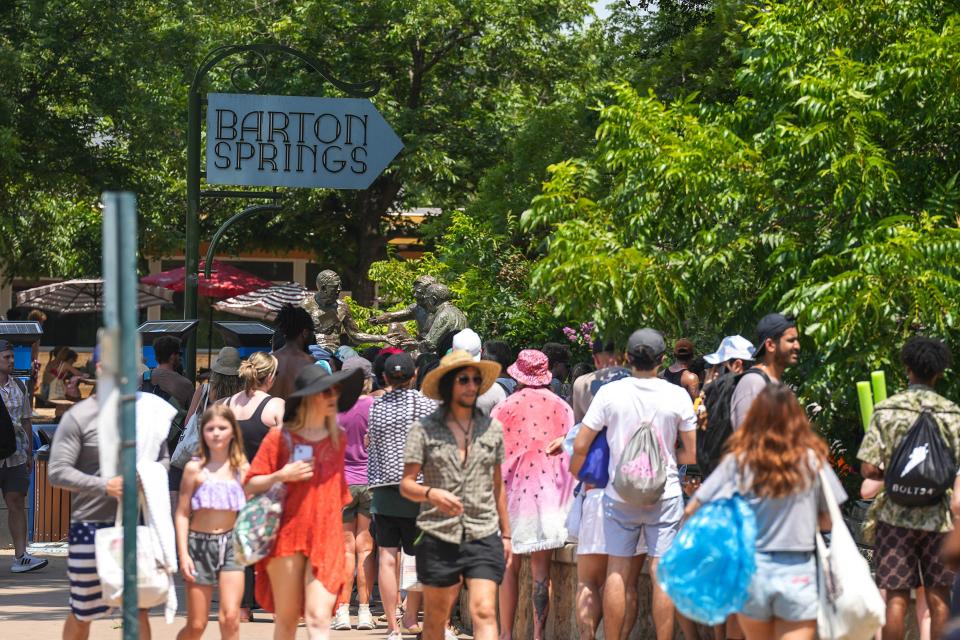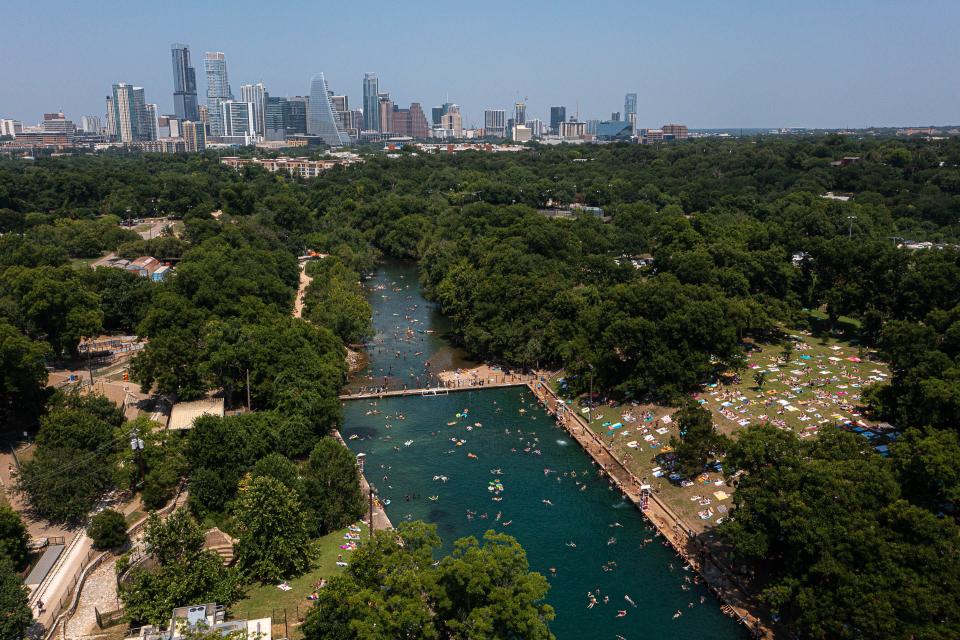A meteorologist's words for Austin's heat: 'bad' and 'oppressive.' But how can we beat it?
Austinites slogging into work after a long weekend of heat warnings aren’t likely to get much relief this week.
The National Weather Service in New Braunfels expects hot, humid weather to last through the week, continuing the brutally abrupt switch to summer after a mild spring.
The weather service on Monday extended to 9 p.m. Wednesday an excessive heat warning for a swath of Central and Southwest Texas, including the greater Austin area.
Excessive heat continues through at least the middle of this week. Take heat precautions. Isolated strong to severe storms are possible late this afternoon into early evening across parts of Hill Country and I-35 corridor. Large hail the main threat. pic.twitter.com/7ODdI1vQGi
— NWS Austin/San Antonio (@NWSSanAntonio) June 19, 2023
The weather service predicted a maximum heat index of 119 degrees Tuesday in Austin.
“It’s going to be really bad,” said Bob Fogarty, a weather service meteorologist. “It’s going to be oppressive.”

Why is it so hot? 'It just lets us get hotter and hotter'
A strong high-pressure system and unusual humidity are to blame for the uncomfortable weather, Fogarty said. The high-pressure, stagnant air tends to make the area above it hotter.
“It just lets us get hotter and hotter,” he said. “The sun just kind of bakes it each day.”
The spring also was fairly rainy, which means the ground is saturated with moisture, increasing the humidity, he said.
With 14.66 inches accumulated, Austin is still slightly behind its typical yearly rainfall to date of 17.22 inches, according to the weather services.
Lake Travis dropped from 640 feet on June 12 to 638.4 feet as of 11:30 a.m. Monday, according to the Lower Colorado River Authority. Lake Travis’ level is designed to fluctuate as it's used by customers, released through Mansfield Dam or as required by environmental regulations.
Across the South, residents are struggling to keep cool without power.
More than 100,000 customers in the southern U.S. were without power Monday after damaging storms, The Associated Press reported.
More than 120,000 customers were without power as of Monday morning in the eastern parts of Texas and portions of Louisiana and Oklahoma, according to Southwestern Electric Power Co. And 4,000 customers were still waiting for electricity to come back in the Texas town of Perryton after a devastating tornado ripped through last week.
Power outages for some customers in the Piney Woods of East Texas could stretch late into this week as crews scramble to make repairs, the AP reported. In some parts of Louisiana and Mississippi, the heat wave has been accompanied by heavy rain, punishing winds, thunderstorms and hail.

The bright side: at least this heat isn't record-breaking
In Central Texas, local energy companies reported that fewer than 100 customers were without power Monday regionwide.
Despite how miserable the heat may be, the Austin area isn’t breaking a whole lot of records.
The area did sneak in a record for June 9, which tied with June 9, 2020, as the 10th-earliest day of the year that the Austin area hit 100 degrees. The record is May 4, 1984.
Beating the heat: what you should do
People should approach the heat with care, Fogarty said.
“Try to avoid the hottest hours of the day, if you can,” he said. “If you have to be outside, the recommendations are wear loose-fitting, light-colored clothing. Try to take breaks in the shade. Try to stay hydrated.”
In 2019, 809 people in Austin visited the hospital because of heat-related illness, according to Austin Public Health.
The city of Austin’s website advertises several summer cooling centers at park and library facilities around town during open hours this summer.
People shouldn't read too much long term into the brutal start to the summer, Fogarty said. A hot June doesn't mean the rest of the summer will follow suit, he said.
Meteorologists predict above-average temperatures for July, but normal high temperatures for that month are about 96 degrees, Fogarty said. Last week, the high temperature was at least 94 degrees each day.
Additional material from The Associated Press.

This article originally appeared on Austin American-Statesman: Central Texans brace for scorching temperatures throughout this week

